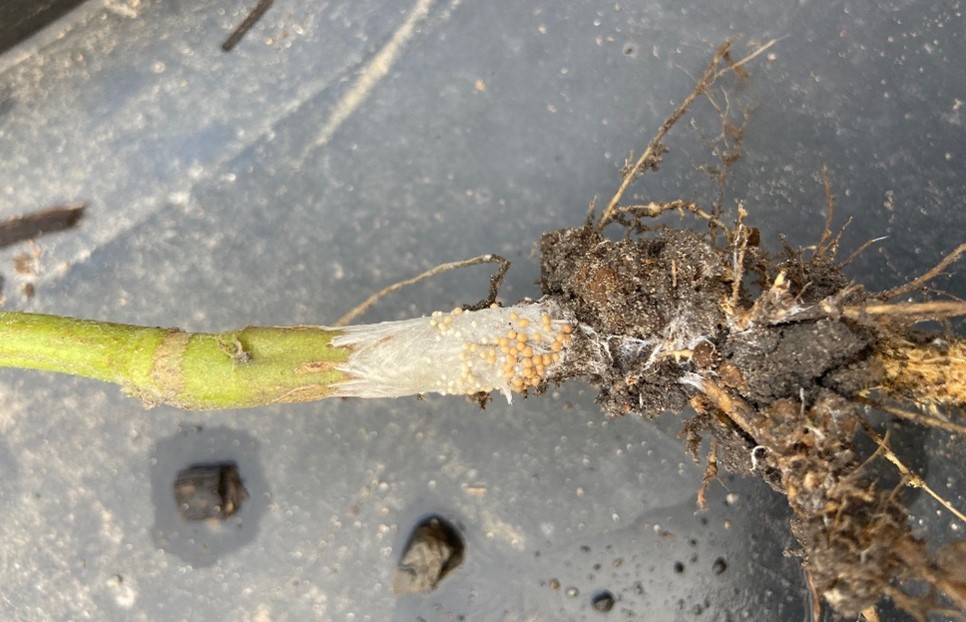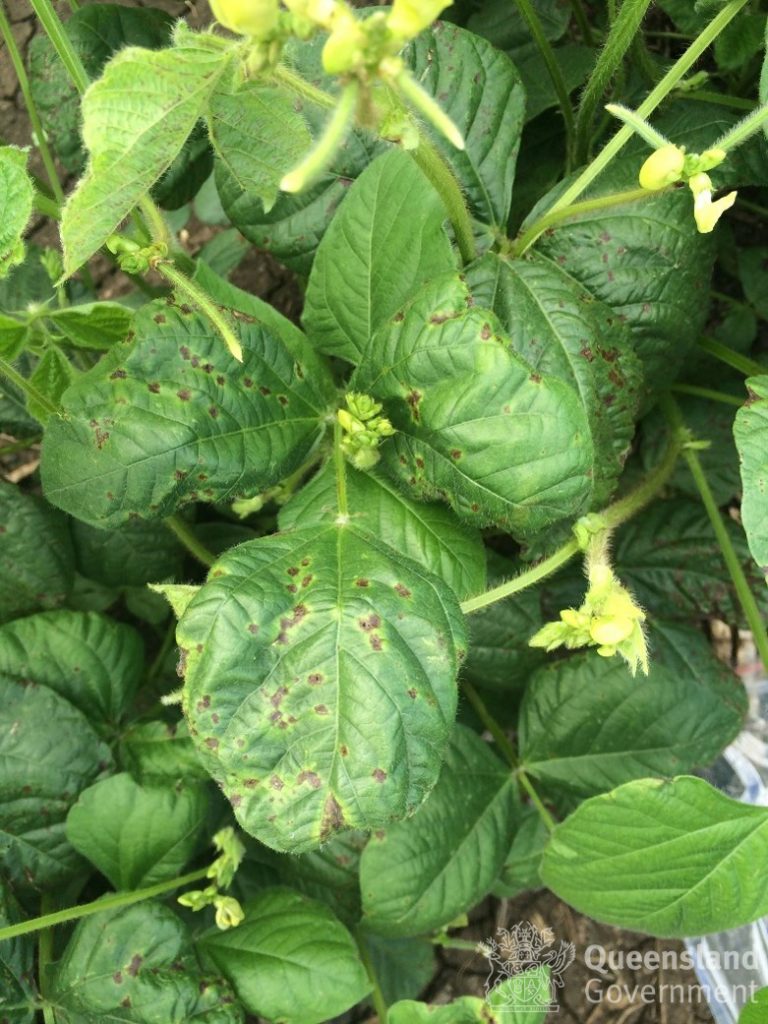Warm, wet conditions have led to isolated outbreaks of the fungal pathogen, Sclerotium rolfsii, in sorghum and grain legume crops across southern Queensland (although other regions are also at risk) and several disease outbreaks in mungbean crops growing throughout Queensland and northern New South Wales.
Sclerotium rolfsii
Sclerotium is a soilborne pathogen that can infect a wide range of plant species, causing diseases commonly known as white mould, crown rot, stem rot, sclerotium blight, seedling rot, and more.
The pathogen typically infects the lower stem of plants near the soil surface, resulting in damping off or girdling of the stem in seedlings, or stem rot and wilting in older plants. As the disease progresses, a white mycelium fungal mat may develop at the lesion site and soil surface. Small, round, light tan to brown fungal sclerotia eventually develop within the mycelium mass that allow the pathogen to persist for long periods in the soil and in infected plant tissues, enabling it to survive between growing seasons. Warm (27-35°C), wet conditions are favourable for disease development and spread.

White fungal mycelium and tan coloured sclerotia of Sclerotium rolfsii on the basal stem of soybean. Photo: N. Halpin
Watch mungbean crops closely
Fusarium wilt, halo blight, and tan spot have been reported in several crops. As the weather becomes cooler, also monitor crops closely for powdery mildew. Avoid replanting seed affected with tan spot and/or halo blight. Minimise the spread of these diseases by avoiding movement through infected paddocks and thoroughly removing any infected soil and crop debris from machinery, vehicles and footwear.

Halo blight affected mungbean plant in a crop growing in southeast Queensland. Photo: L Kelly
More information on these diseases:
- Sclerotium blights and rots (Beatsheet)
- Sclerotium rolfsii (American Phytopathological Society)
- Sclerotium disease (DAF)
- Fusarium wilt in mungbeans (Beatsheet)
- Is your mungbean seed free of halo blight? (Beatsheet)
- Tan spot (Beatsheet)
If you see disease symptoms in grain crops, please contact plant pathologist Lisa Kelly ([email protected], 0477 747 040) for further information on disease diagnosis.
